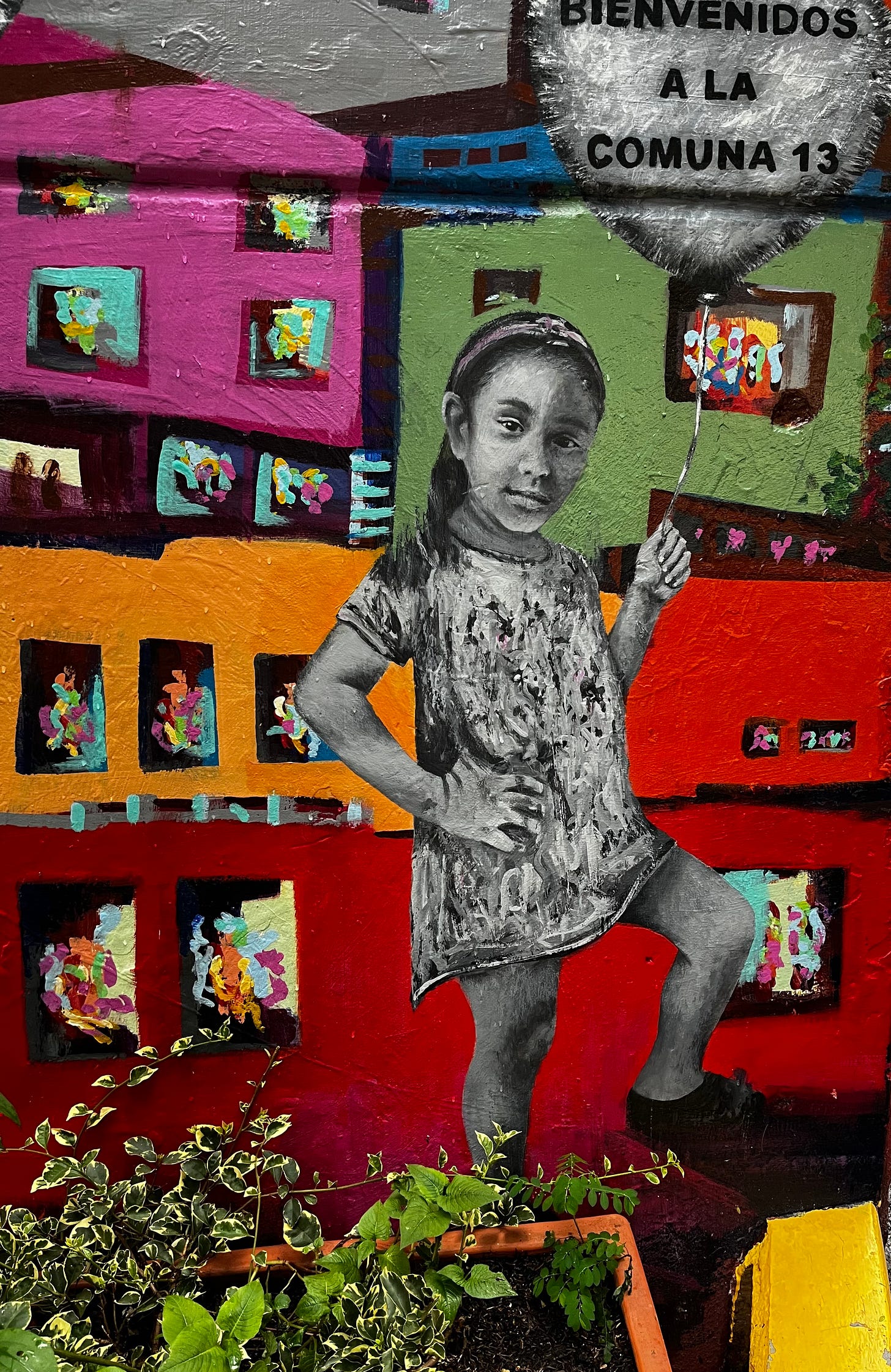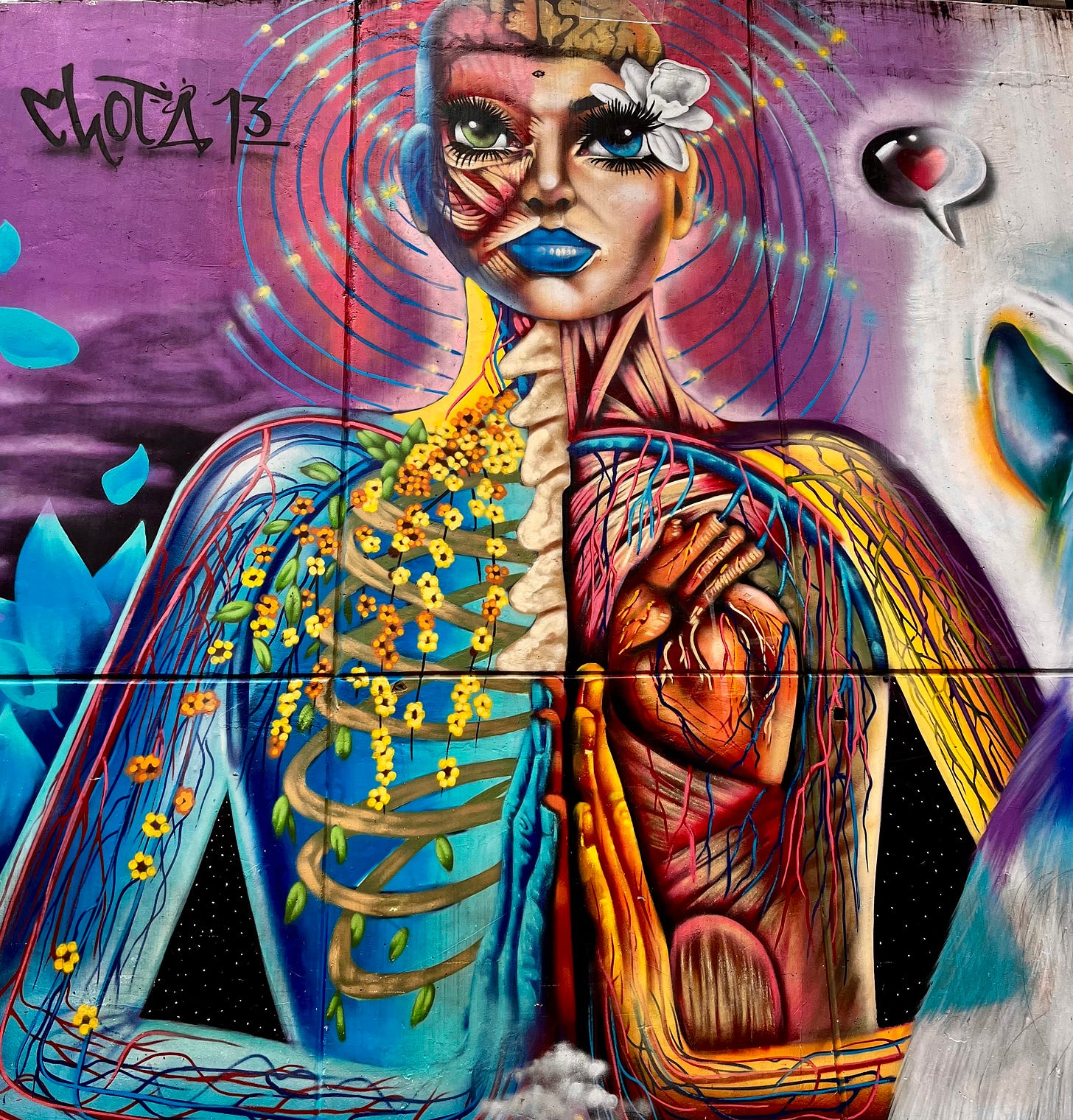# 34 My Dubious Visit to the Comuna 13 in Medellín, Colombia
A hybrid photo essay on the ethics of framing, lying by omission, and asking questions we cannot answer.
I’ve been thinking a lot about framing lately. Each week, I pick a topic, perspective, and headline, and the more I do this, the more I become aware of how much I leave out.
The essays I write here are often longer than I intend them to be, because excluding certain observations can feel fraudulent to me. It’s impossible to be comprehensive: Telling a story is confining reality into a shape. I must focus my attention and let go of questions that are only tangentially related. But when is my chosen frame harming the truth? When do my cuts turn into lies of omission?
Recently, I visited the once notorious Comuna 13 in Medellín on an organized tour. Daniel and I hardly ever book such day trips, yet several enthusiastic travel writers had convinced me this was a sight I ought not to miss. I didn’t like the tour and could have left it at that. I tend to write about things that leave a positive impression on me, sharing encounters that have changed me. But when I went through my photographs, I realized I had to tell this story anyway, in the ambiguous way it exists for me: framed within the limits of my personal experience yet also questioning the framing. Negative or mixed experiences can be just as transformative.
Let’s have a look!
My Dubious Visit to the Comuna 13 in Medellín
Few neighborhoods in the world have seen so much violence and injustice as the Comuna 13 in Medellín, Colombia. Most inhabitants arrived in the 1970s and 1980s, when cocaine manufacturers of various stripes forced them to leave their fertile lands in the mountains to find housing elsewhere. They built ramshackle homes on steep hillsides on the outskirts of Medellín. Without the ability to grow their own food and with no government help, the displaced couldn’t sustain themselves and had to rely on unreliable guerrillas for support.
During the 1980s and 1990s, Comuna 13 became a no-go zone, one of the most dangerous places in the world. The death of Pablo Escobar in 1993 only made matters worse, because in the power vacuum he left, different groups fought for dominance over the neighborhood, which had become a gateway between the coca plantations and the city.
Innocent inhabitants of Comuna 13 suffered from government-organized raids targeting the guerrillas. The employment of paramilitary troops brought even more intense violence. The paramilitary were paid for each enemy corps, so they killed civilians before dressing them up as guerrillas.
Over time, especially after 2005, the situation improved. The government funded two programs: free English lessons and the installation of escalators that unintentionally attracted tourist crowds. The neighborhood adapted quickly to new opportunities and rose like a Phoenix from the ashes.
Nowadays, Comuno 13 tours are among the most popular in Medellín. Three times a day, a multitude of young English-speaking guides take wide-eyed foreigners into the once so dangerous streets to photograph street art and breakdance performances, buy souvenirs, enjoy ice cream, taste corn empanadas, ride the escalators, and take some painful history lessons home. The neighborhood has become a symbol of community resilience.
But is this the whole story? Is a community thriving when it relies solely on the (morbid) curiosity of (foreign) tourists? Is the makeover successful when the neighborhood fills with coffee shops and galleries the locals cannot afford to frequent?
Living in Comuna 13 is no doubt more peaceful now than it was two decades ago—tourism might be changing the world for the better for once. But is it a sustainable peace? A fair peace? Was turning Comuna 13 into a tourist must-see destination the best choice for the community? What got lost forever?
This post is for paid subscribers. If you’d like to read it in full, please upgrade to a paid subscription. Each month or so, I’ll publish an essay exclusively for those who financially support my writing.
Then again, I want my writing to be accessible to all. So if you cannot afford to pay and would like to read this essay, please subscribe for free and send me a short message expressing your request. I’ll comp you. No questions asked.
If you publish a Substack and would like to exchange paid subscriptions, please be in touch as well.
Keep reading with a 7-day free trial
Subscribe to Wander, Wonder, Write to keep reading this post and get 7 days of free access to the full post archives.







